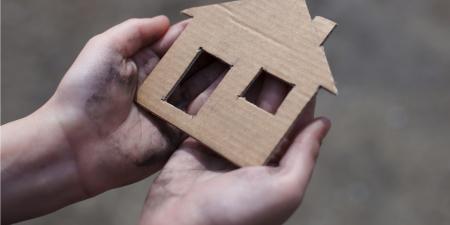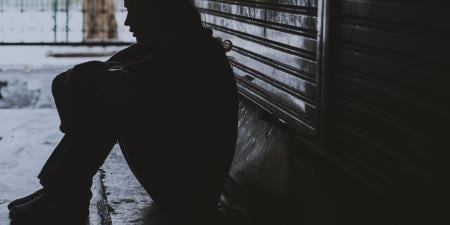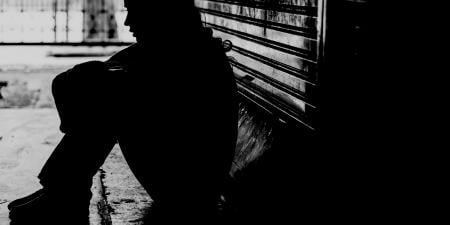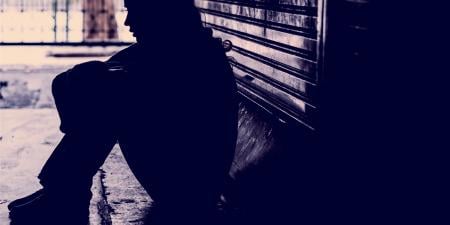Q: What were some of the more notable medical illnesses and mental health issues that Katrina survivors faced?
A: Hurricanes Katrina and Rita impacted health and health care for the people along the Gulf Coast in a number of ways. In the short term, those with serious chronic illnesses--like diabetes mellitus, chronic obstructive pulmonary disease (COPD), and cancer--had significantly diminished access to needed health care and medications for periods ranging from months to years. Health care sites and systems for hundreds of thousands of people were destroyed, including the loss of millions of medical records, hundreds of doctor's offices, and entire hospitals. Thousands of clinicians were displaced, and some--like their patients--were forced to relocate permanently to other areas of the country. Many who faced serious health consequences as a result of interrupted or delayed care were low-income and uninsured people. Because these interruptions prevented some patients from getting medications for transmissible illnesses, antituberculosis or antiretroviral medications, for instance, they threatened the health of the public at large [1, 2].
The most critical and worrisome long-term health problem that emerged from Hurricanes Katrina and Rita has been the enormous effect on the mental health of children and adults alike [3]. Epidemiologic studies have taught us, that, after most disasters, a certain percentage of the affected population experiences new-onset symptoms of depression and/or posttraumatic stress disorder (PTSD). Prevalence usually peaks at around 6 months to 1 year after the disaster and diminishes thereafter as people get treatment or as their natural resilience fosters spontaneous recovery. After Katrina and Rita, symptoms of stress, depression, and PTSD rose dramatically and did not recede. The best data suggest that 35 to 40 percent of people who lived in areas directly affected by the hurricanes continue to experience these disabling symptoms [4]. This is twice the baseline incidence for that region of the country.
One hypothesis for this high prevalence of symptoms is that the enormity of the devastation and inadequacy of assistance following the hurricanes have delayed recovery. In New Orleans more than 3 years later, once-vibrant neighborhoods remain barren and people still struggle to cope and experience ongoing PTSD and depression.
Q: How did the health care system address these illnesses during the disaster and in the ensuing months?
A: During the immediate disaster, volunteers, public agencies including the United States Public Health Service, local hospitals, and health care teams responded quickly with a patchwork of services to assist the millions of people displaced in shelters in other communities, as well as those who were not able to evacuate. Delivery of services was not particularly systematic, but we did not see major outbreaks of infectious disease among the evacuees, and that was a small victory. In the months that followed, Medicaid waivers allowed some coverage for enrollees across state lines so that at least some of the displaced people did not lose benefits and were able to seek care in settings that accept Medicaid. Local health care stakeholders in Louisiana began to work quickly after the hurricanes to rebuild the system. In New Orleans, volunteers and nonprofit organizations organized several new clinics in the weeks that followed, many of which have now become leading sources of care in the community as it rebuilds, particularly for uninsured residents [5].
Q: What are some of the ethical issues you encountered in working with patients made homeless after a natural disaster? How are these different from those of other homeless patients?
A: One has to adopt a somewhat different lens when, instead of facing the challenges of a homeless individual or family, or the collective needs entrenched in a given homeless shelter, one faces the challenges of a community that has lost 100,000 housing units, the homeless population has doubled, and, at least initially, half of the population is at risk of becoming homeless. This prompted many questions. What should my priority as a doctor be? Should standard health care for chronic physical conditions come first, knowing that, because of the destruction of the infrastructure, my patients will be unable to receive basic lab tests with fewer than three referrals to three separate locations? Should I be trying to get patients mental health care, knowing that depression is the second leading cause of disability worldwide and that essentially everyone is at risk of depression? Should I try to help an individual stabilize his or her housing situation, knowing that housing stability plays a major role in determining how successfully one can manage health conditions? Given the breadth of the needs and the limits of resources, prioritizing interventions raises a host of ethical issues. Preventive care has often fallen by the wayside entirely, because now, in the entire community, there is literally nowhere for an uninsured person to receive preventive procedures such as a screening colonoscopy.
Q: What are some of the efforts being made by physicians, health care facilities, and the Louisiana Health Care Redesign to improve care for the homeless?
A: The extent of the infrastructure needs in some parts of the community are so broad that most organizations and providers do not pay attention to care for the homeless per se, except as a byproduct of intervening to affect care for the greater population. For instance, the main source of care for low-income and uninsured people including the homeless in New Orleans until the disaster was Charity Hospital and its affiliated clinics. After flooding caused by the levee failures, Charity closed, though some of its services have reopened nearby. There have been multiple proposals to rebuild Charity on a new campus, most likely alongside a new Veterans Administration Hospital. These new hospitals would help many homeless people, though it will probably be many years before these proposed hospitals open their doors. Meanwhile, without an overhaul of the payment systems and expansion of coverage through Medicaid, homeless and low-income individuals without insurance will continue to live without certain hospital-based services. New clinics such as the Tulane Community Health Center at Covenant House, mobile health units like the Tulane and St. Anna Mobile Medical Units, and volunteer-supported efforts like the Common Ground Health Clinic have made strides to improve access to ambulatory care for the homeless, but there is still room to grow.
Q: Do you foresee a physician shortage continuing in those areas affected by Katrina?
Fortunately, state and federal support in the form of medical school loan repayment and other incentives have closed the health care professional shortage so that, on a per capita basis, New Orleans now has enough doctors overall, though shortages remain in specialty areas like psychiatry. The challenge from a public health perspective is that most doctors work in settings that are inaccessible to the uninsured, so the distribution of those services is misaligned.
Q: What are some important things that medical students need to consider when working with underserved communities?
A: Most importantly, medical students should keep in mind that it is a privilege to care for the patients and communities with whom they work. Practice humility, and when you think you have practiced enough, practice humility even more. You, the student, are walking away with a lot of education and potential for growth because of the privilege your patients grant you with each encounter. As a student and doctor, we do not bring any more value to the encounter than the patient does. You must engage the patient and community as your partners if you are to make a lasting difference and share the benefit of your experiences and training. If you are to benefit from their lives and experiences, you must earn their trust.
Q: How has your work with Katrina survivors changed your view of medicine? What do you think are important lessons that Katrina can teach medical students and residents?
A: I think Katrina showed all of us that the entire nation is far more vulnerable to disasters than we might have expected and that we are more resilient in our ability to work together to facilitate recovery. The amazing stories we have heard since the hurricanes--new clinics opening, people receiving needed care, delivery of emergency services--are attributable to the efforts of residents and students at Tulane, LSU, and Ochsner, and to volunteers and community members who worked an incredible number of hours to help keep the city and its people alive.
Q: What do you think can be done by the medical profession, as a whole, to improve care to underserved populations?
A: As physicians we must seek to improve health care for those who suffer from the greatest health disparities. In the United States, this means particularly members of racial and ethnic minority groups. Physicians must acknowledge and respond to the staggering and enormous evidence base about disparities and how to reduce them. People of many backgrounds experienced adverse life changes and poor health consequences as a result of the 2005 hurricanes and levee failures, but, overall, the health and other impacts of the disaster were born disproportionately by African Americans. If our goal is to improve health, we must also strive to improve health equity.
References
- Kessler RC. Hurricane Katrina Community Advisory Group. Hurricane Katrina's impact on the care of survivors with chronic medical conditions. J Gen Intern Med. 2007;22(9):1225-1230.
-
Springgate B, Allen C, Jones C, et al. A rapid community participatory assessment of healthcare access in post-Katrina New Orleans: critical challenges, vulnerable populations, and community adaptations. Am J Prev Med. In press.
- Springgate B. Down in New Orleans. Health Aff (Millwood). 2007;26(5):1426-1430.
- Kessler RC, Galea S, Gruber MJ, Sampson NA, Ursano RJ, Wessely S. Trends in mental illness and suicidality after Hurricane Katrina. Mol Psychiatry. 2008;13(4):374-384.
-
Springgate B, Jones C, Allen C, et al. Community-based participatory assessment of health care needs in post-Katrina New Orleans: an update for community members and advocates. In: Gillman M, Fischbach S, Wolf L, Azikiwe N, Tegeler P. After Katrina rebuilding a healthy New Orleans. Final conference report of the New Orleans Health Disparities Initiative. 2007. http://www.prrac.org/pdf/rebuild_healthy_nola.pdf. Accessed December 11, 2008.



